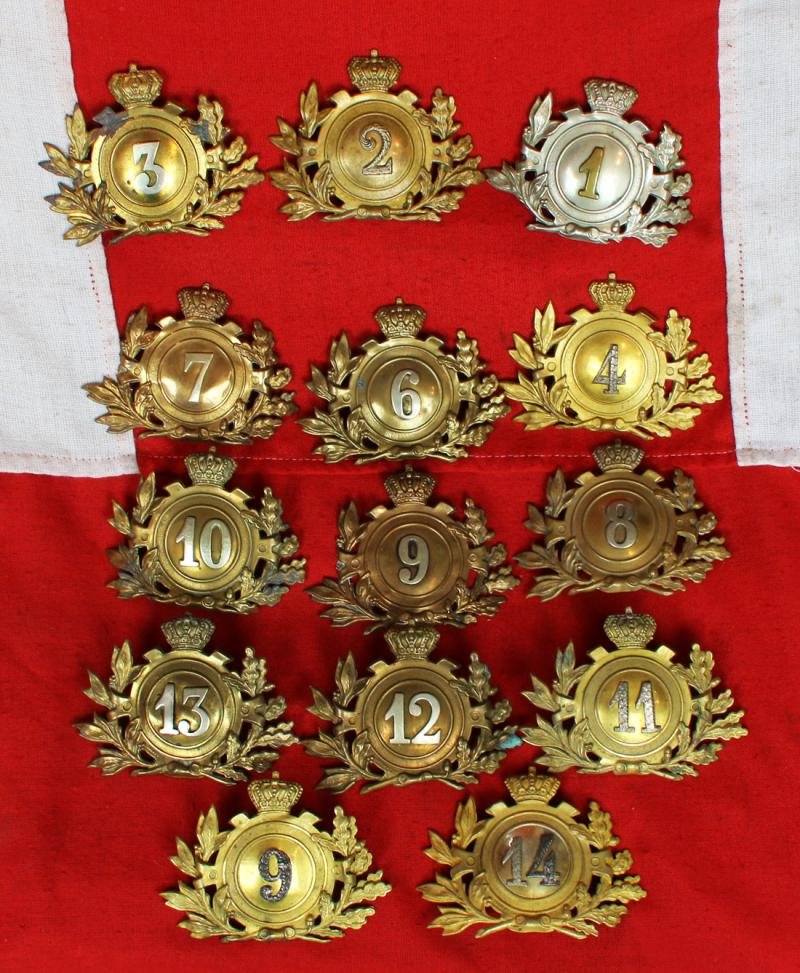

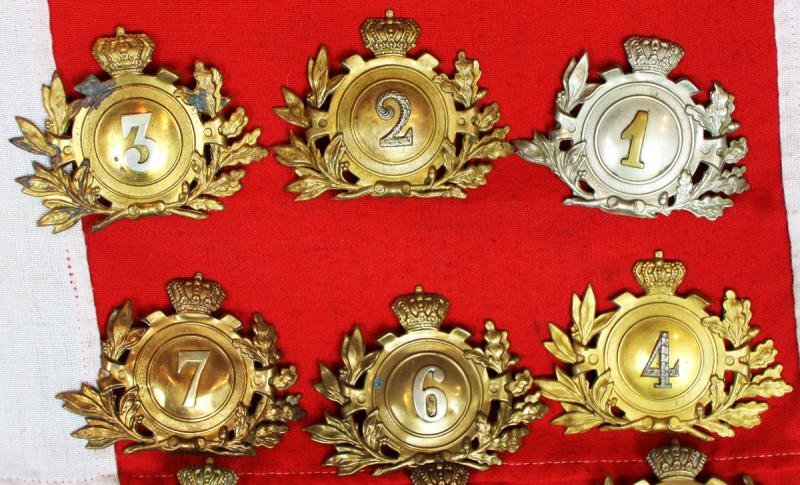
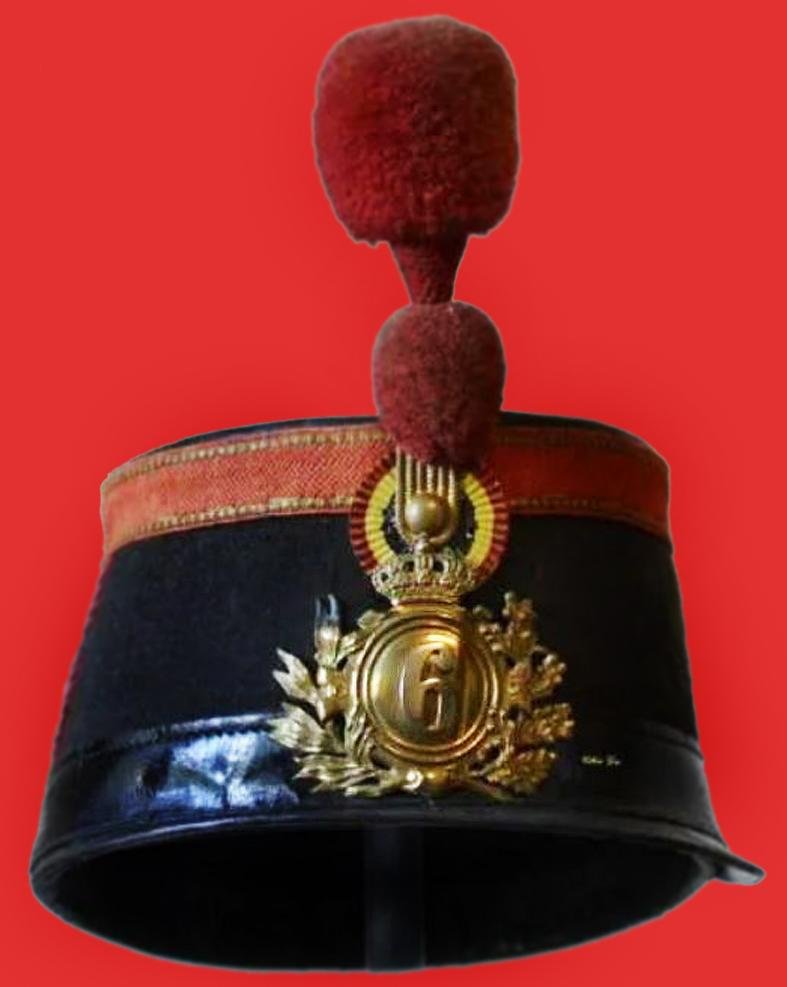
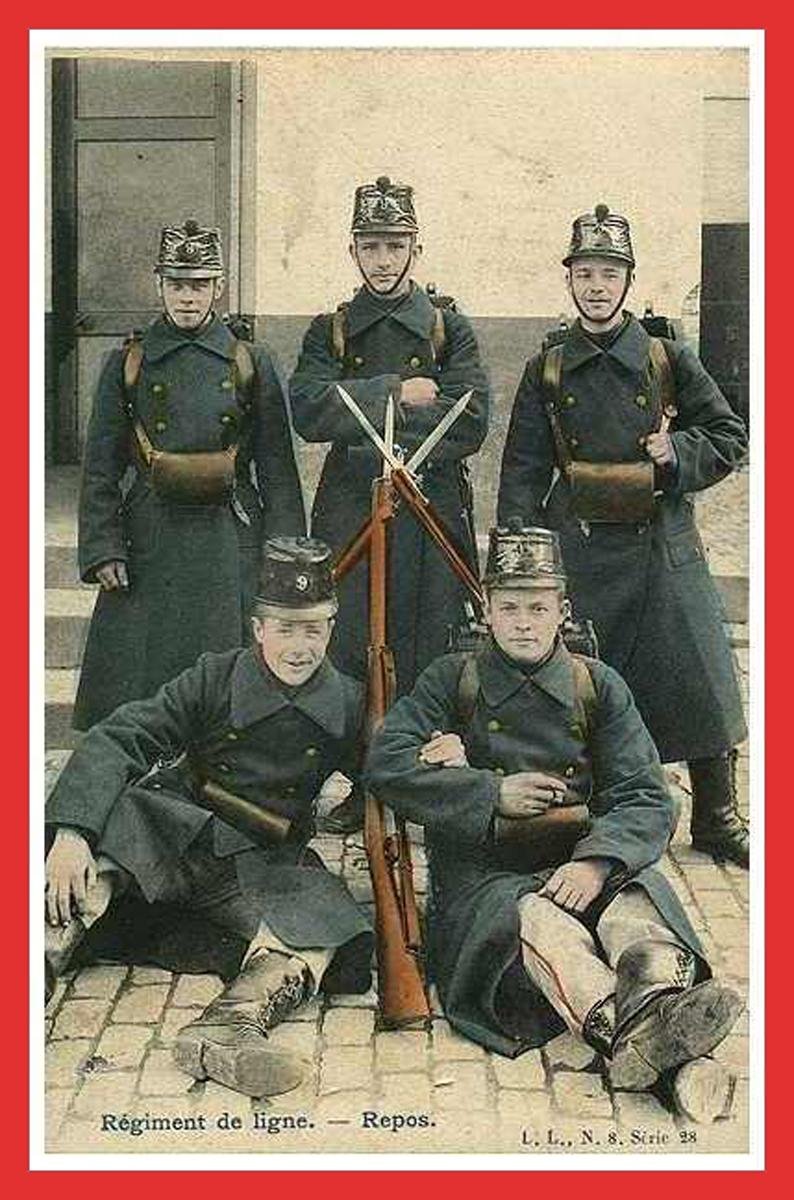
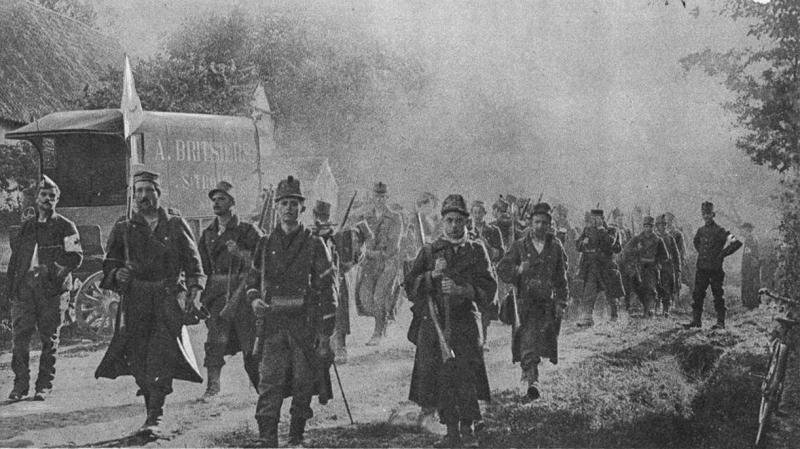
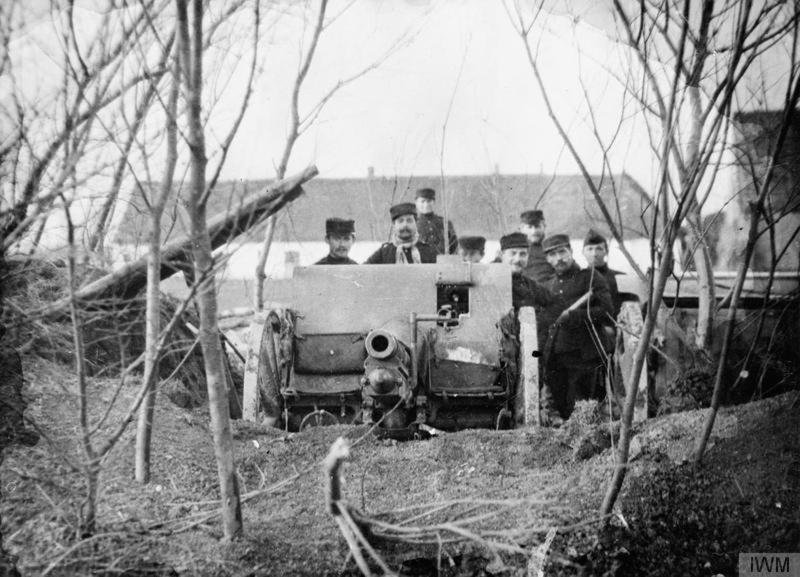
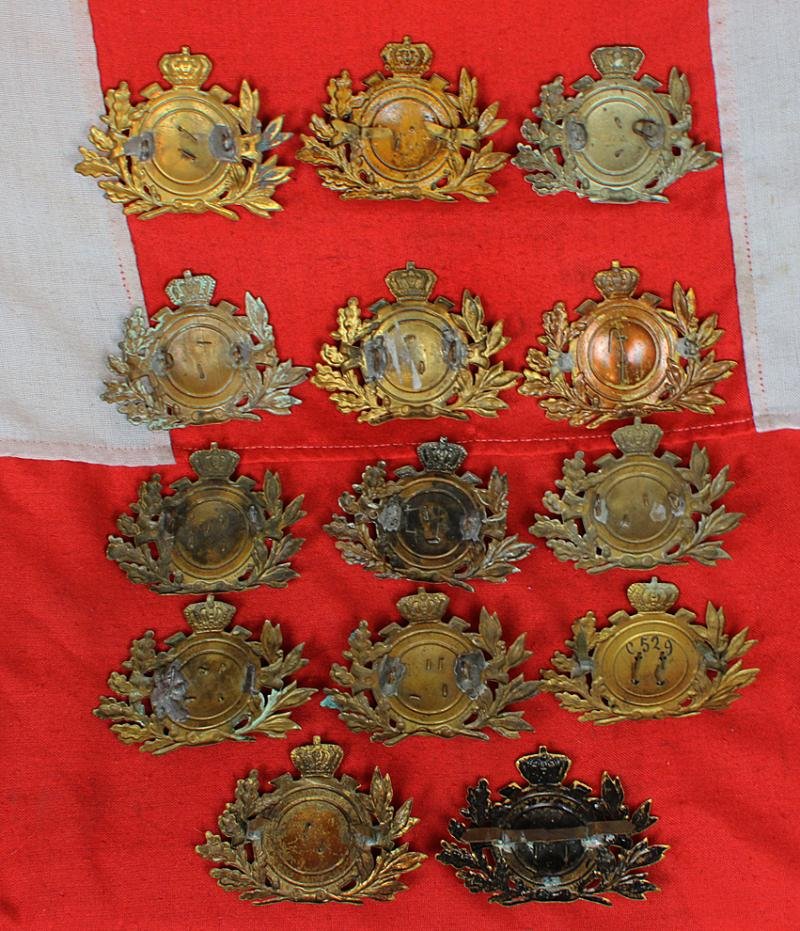
Rarely Seen Original WW1 Line Infantry Belgian Shako Helmet Plates. A Near Complete Set. Used In 1914 At The Early Part of WW1. The Combined Dress and Combat Helmet Before the Adrian Steel Helmet Was Produced. Maker Marked by Fonson & Fils
| Conflict | World War I | Nation | Belgium |
| Item Type | Insignia, Collar Tabs, Epaulettes & Patches | Source Site | THE_LANES_ARMOURY |
| Product ID | 497294 | Currency | GBP |
Ships from: United Kingdom
Priced 'EACH', for a single, {1}, helmet plate of your choice.Many made by Fonson & Fils or Lambermont. Maker marked on the plate front.In the first year of the war, in the period that resulted in the infamous trench warfare era, all the combatant nations wore their regular service caps and helmets, such as shakos, forage caps, pickelhauben etc. in combat until the obvious need for superior head protection and thus the steel combat helmet was born.This is a fabulous collection of a near complete set of the main combatant Belgian Regiments-of-the-Line {only the 5th Infantry Regiment-of-the-Line lacking} that fought to protect 'Little Belgium' from the vastly greater forces that numbered their Prussian, German invaders.Belgian line infantry in WWI were organized into 14 regiments and formed the backbone of the Belgian army, bearing the initial brunt of the German invasion. They fought bravely in early 1914 during the defense of Liège and later at the Battle of the Yser. Their uniforms were often considered outdated for modern warfare, leading to modifications and changes throughout the war.The infantry was divided into line, rifle, carabinier, and grenadier regiments, with the line infantry forming the largest component.Belgian infantry was the first to meet the German attack, fighting in fortifications around Liège.The initial Belgian uniform was not ideal for modern combat and was later adapted.The infantry played a vital role in defending key sectors, including the Albert Canal, the K-W line, and eventually the Yser Front, where the landscape was even flooded to slow the German advance.Mobility: Due to their insufficient numbers and equipment, they were forced to make strategic withdrawals, such as the abandonment of the K-W line, and were sometimes reinforced by other allied units.Belgian infantry participated in the final offensive of the war, fighting in battles like Courtrai, the Lys, and the Escaut, helping to liberate Bruges and OstendInterestingly despite being the population of 'neutral' Belgium {7.6 million} in 1914, being just around 10% of the size of the UK today {70+ million}, their army was 220,000 which was still three times that of the UK army is today, despite being 'completely unprepared for war' in 1914. It managed a plucky resistance, but was fully occupied by the Kaiser after just three months.In 1940, early WW2, 'neutral' Norway fell after just 120,000 Germans invaded, {this number was the eventual number of German force of invasion, but the actual initial 'landed' force in Norway was much smaller} and the capitol Oslo was captured by just 1,500 German falshirmjager.Other 'neutral' countries, Denmark, Belgium, Norway, Luxembourg, and the Netherlands were all invaded and occupied by Germany. Yes, incredible as it may seem, despots ignore neutrality, if and when it suits them.Just include the plate's regimental number on the order. If a buyer wants two or more you will have to make another order for each badge

